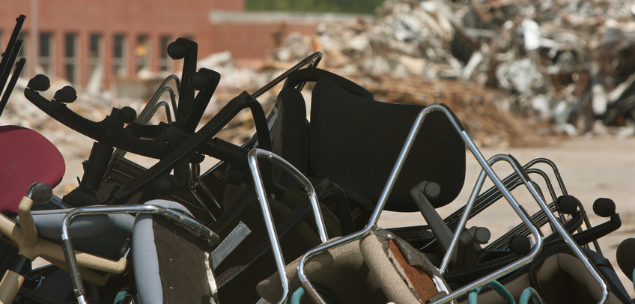A desk chair is just a chair, right? Wrong! When choosing furniture for your workplace it can be easy to let cost overrule quality, especially if you are undertaking a refurbishment, moving office, or if cash is tight. To cut costs, often the investment in new furniture is the first thing to get sacrificed.
A lot of businesses decide that if it looks good and the price is right, it is a good decision. Aesthetics and cost are only two elements to think about when purchasing furniture for your business, and both issues can be resolved when buying quality.
Nowhere is the old adage ‘you get what you pay for’ truer than in the selection of office furniture. Poor furniture choices can destroy a carefully crafted workplace and work against an organisation’s critical health, wellbeing and engagement drivers.
Here are the key factors you need to consider when choosing furniture pieces for your business:
1. Quality construction
When it comes to upholstered furniture, cheap, less durable furniture will be held together by nails, staples or glue. Mid-range furniture will have dowels or screws. The best quality furniture will have timber jointing such as dovetail or mortise and tenon. The higher the quality, the longer it will last.
2. Quality materials
Upholstered cushions that only have foam are less durable and less comfortable. Higher quality furniture will have dense cushions where a block of foam has been wrapped in Dacron, cotton or down. When choosing upholstered furniture, think not only of comfort but also seat heights, widths, firmness and length of time people will use each item for.
3. Scale and proportion
The furniture should be drawn to scale on the plans. However, volume also needs to be considered. This includes ceiling heights, corridor widths, and how the item will ‘sit’ in a large open space. There is nothing worse than a room that has too little or too much furniture of the wrong size and proportion.
4. Longevity
Do you want to replace furniture every five years or do you want something that will last? Everything needs maintenance and if good quality items are purchased then maintenance is reduced and lifespan of the item is extended. Buying for longevity also means less waste and landfill and is much better for the environment.
5. Cost per use
Say you spend $1,000 on a task (or desk) chair. This chair is used on average three days per week. Over the course of a year this equates to $8.20 per week or a daily sit rate of $2.75. Over the course of a 10 – 15 year lease, the chair more than pays for itself!
6. Sustainability
Quality items that are produced with the environment in mind will last a lifetime and reduce landfill and waste. A well-made item can be updated with a fresh coat of varnish or by being reupholstered or repurposed. Not only are quality furniture pieces a good investment, they are also a good environmental decision.
7. Fake vs authentic
Do you let your children copy their classmate’s work? Would you buy fake Louis Vuitton handbags? Would you illegally download movies? Would you steal someone else’s intellectual property? There is huge debate in Australia over the issue of replica furniture, and we are well behind the European approach where fakes are outlawed in many countries. A designer worth their salt would never specify a fake designer item.
8. Ratings and rankings
Rank the furniture item according to use and impact. You might spend less on a workstation for example and more on an ergonomic task chair for people sitting at the workstation because the physical impact is felt more. You’d spend more on chairs for rooms where long board meetings happen and less perhaps on kitchen or breakout stools where people are sitting for shorter periods of time. Figure out which items you’ll use the most and invest more in these pieces.
9. Ergonomics
With more agile work styles and the ability to work anywhere at any time, it is important that furniture settings are ergonomic. The higher the quality, the higher the ergonomic properties as more time has been spent during the design phase on research and development into human centred design and how the item supports people’s physical needs.
10. Investment
People may not be able to see quality, but they can feel it through use. The use of appropriately selected furniture and design says something about a business’ attitude and its ability to make an investment in what matters; whether that is furniture, people, strategy, customer service or any other element of the business.
About the author
Angela Ferguson is the Managing Director of Futurespace, a interior design and architectural agency that creates intelligent, practical and future-focused physical spaces.

